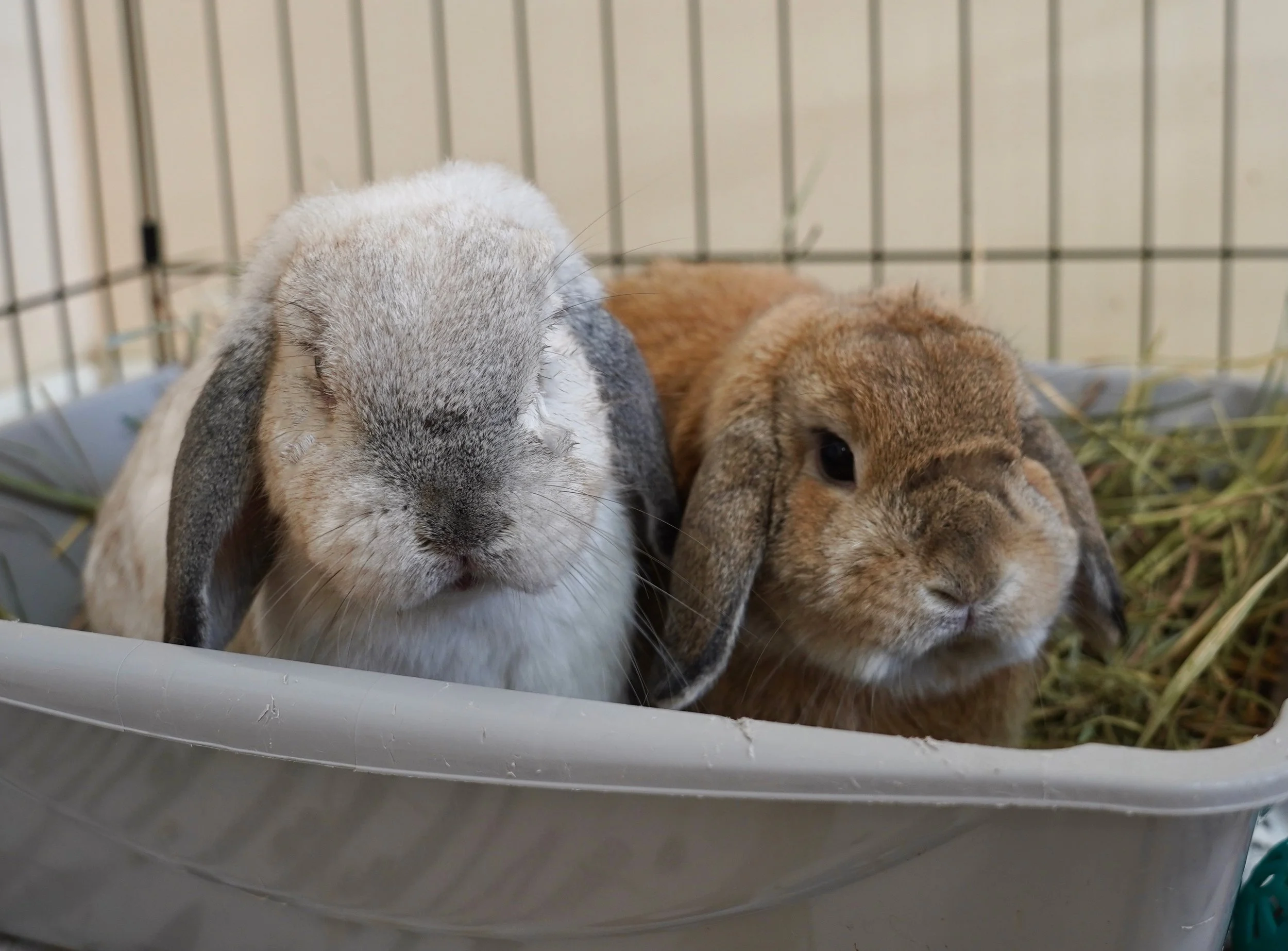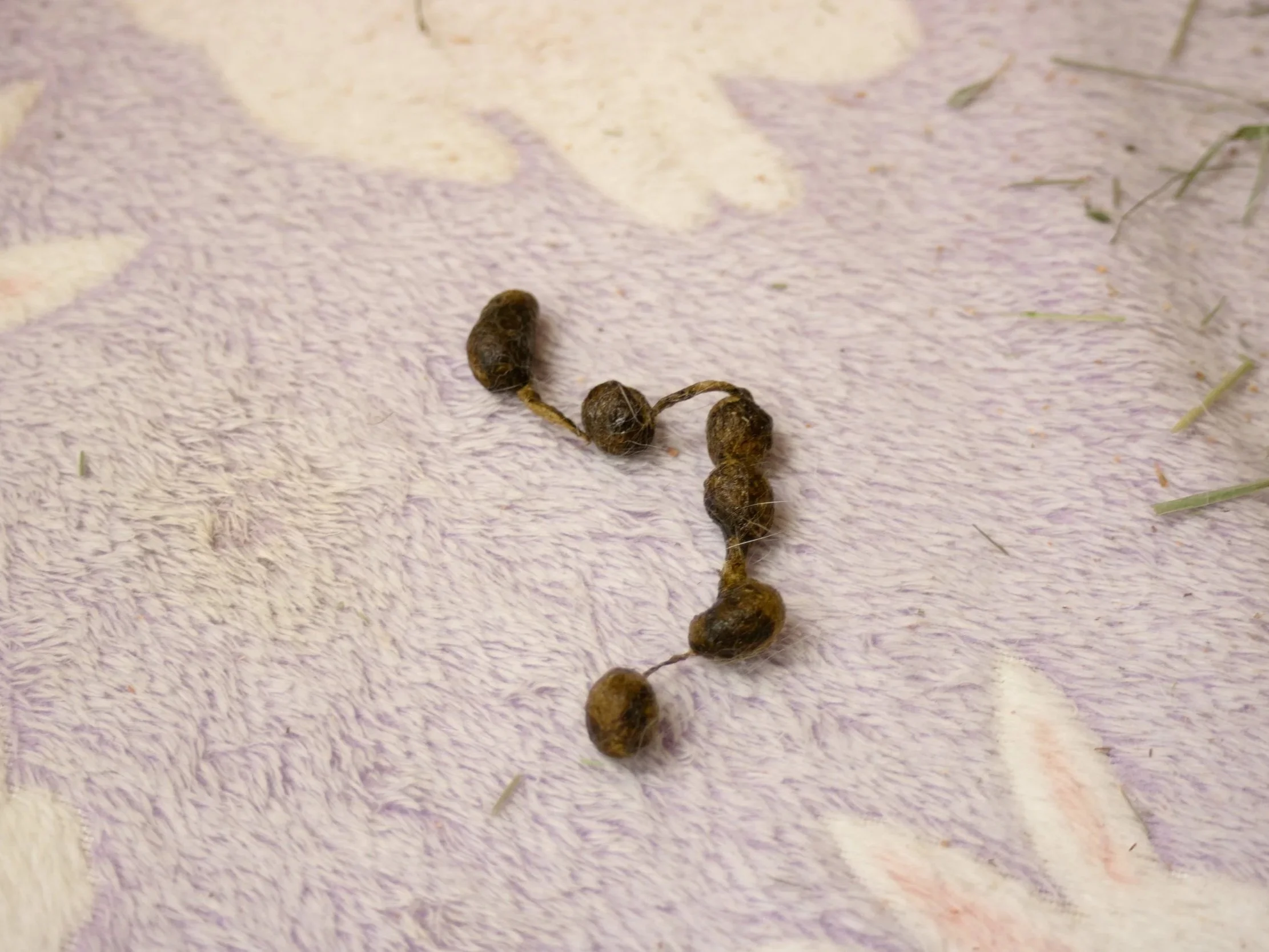
Rabbit Droppings As Health Indicators
Rabbits are hind gut fermenters and, as a result, they have 2 different kinds of droppings - round, hard droppings made of long hay fibers and soft, wet, cluster droppings called cecotrophs made of partially digested foods and nutrients. In healthy rabbits, it is typical to never see the cecotropes as most rabbits eat them directly from the anus. If you are seeing frequent cecotropes in the rabbit’s housing, your rabbit could be:
Eating a diet too rich to digest
Experiencing a GI illness
Having mobility issues preventing them from reaching the rear end to ingest cecotropes
If you consistently see leftover cecotropes, we recommend consulting a rabbit-savy veterinarian.
Examples of healthy droppings
Healthy caecotrophs. Also known as cecotropes, caecal pellets, or caecos.
Healthy dropings. This example is large, golden, and indicates good hay intake.
Healthy dropings. This example is smaller, darker, and indicates less hay intake.
Indicators of Health
Rabbit urination and droppings are the easiest identifiable indicators of a rabbit’s health. What follows are some common causes for misshapen droppings and changes in urine. This is not a means to diagnose an underlying problem, but as indicators to talk to your veterinarian about dietary changes, additional tests, or medications that your rabbit may need.
String of pearls
Hard droppings strung together with fur. Rabbit is ingesting too much fur while self grooming or grooming a bonded mate. More frequent brushing of your rabbit will help minimize the amount of fur ingested that may cause blockages.
Small hard poops
More “bulk” needed from consumption of plant fibers Increasing hay consumption will likely increase the bulk of droppings. We recommend consulting your veterinarian to be sure no underlying intestinal problem is present.
Soft, misshapen cecotrophs or diarrhea
There are many causes for soft misshapen caecotrophs including parasites such as coccidia, overconsumption of sugar, changes in diet, and other underlying gastrointestinal conditions. We recommend consulting your veterinarian as soon as possible to be sure no underlying intestinal problem is present.
White, thick deposits in urine:
Deposits in the urine are typically minerals that are built up and flushed out of the body. The most common cause of mineral deposits (sometimes referred to as sludge) are high levels of calcium. This is most common in nursing mothers and growing young rabbits as their diets are higher in calcium from alfalfa hay. Chalky urine can be normal. Urine retention or inability to fully empty the bladder can cause visible deposits. Your veterinarian can advise you on next steps such as diagnosis of a condition or changes to diet.
Blood in urine
If blood is seen in the urine, this is always a reason to see your veterinarian. The most common cause of blood in urine is a urinary tract infection. Other causes of blood in urine, such as cancer or urinary stone, will need to be ruled out by your veterinarian and may result in additional urine lab testing. Red urine (see below) is often mistaken for blood in the urine.
Red urine
Red urine, not to be confused with blood in urine, is typically caused by the oxidation of urine after the consumption of dark, leafy greens. It is normal for rabbit’s urine to change color and/or texture at times. This is often due to variations in diet, water intake, etc.
Variation in urine amount
Urine amounts can vary between rabbits as well as in individuals at different times. This is often due to ambient temperature and humidity as well as variations in the foods they eat. If you have concerns about the changes in amount of urine produced, we recommend consulting with your veterinarian to rule out underlying health conditions.
Variation in amount of feces
A decrease in the rabbit’s typical quantity of fecal pellets seen can indicate an underlying GI problem and we recommend consulting your veterinarian.
Composting and Rabbit Droppings
About 80% of a rabbit’s diet should be hay (such as orchard, timothy, or oat). Their droppings make excellent fertilizer for your garden. Rabbit droppings are rich in nitrogen, phosphorus, potassium, and other minerals that are excellent for plant growth.*
If you use biodegradable litter, you can throw the entire litter pan contents into your compost bin or use in your garden. In comparison, many cat litters can’t be composted. Additionally, waste from dogs and cats can’t be composted as they may contain harmful bacteria. People often also use plastic bags to pick up after their dog.
*We do not recommend using droppings from rabbits that are on medication as the medication can affect the soil and plant growth.












